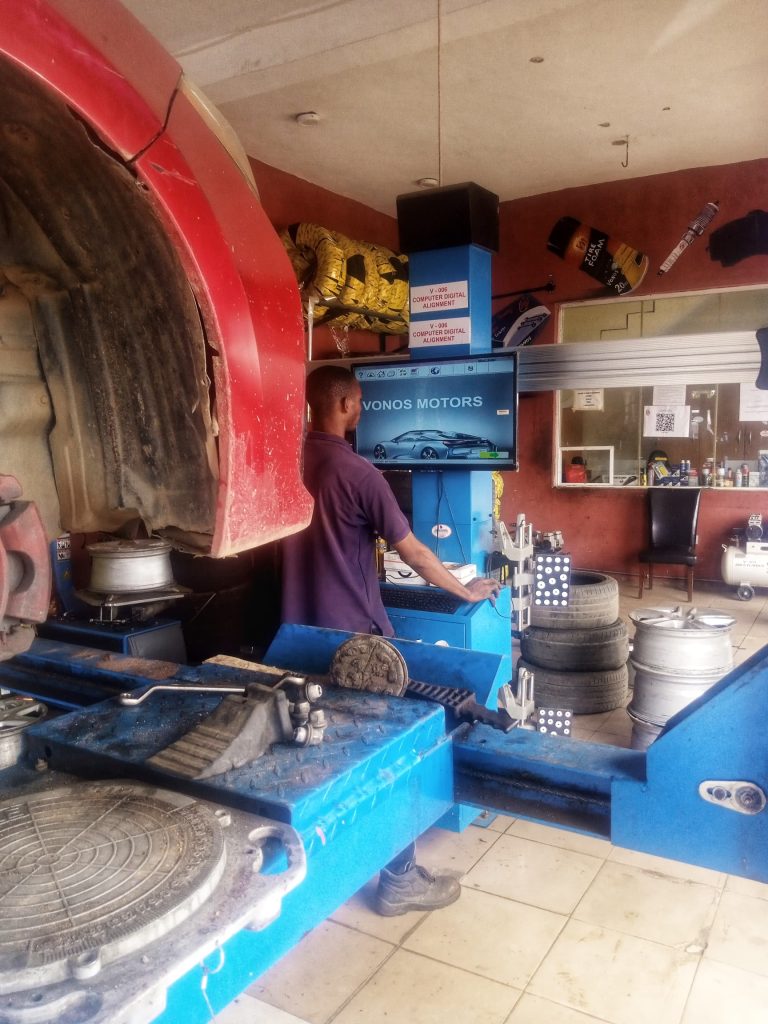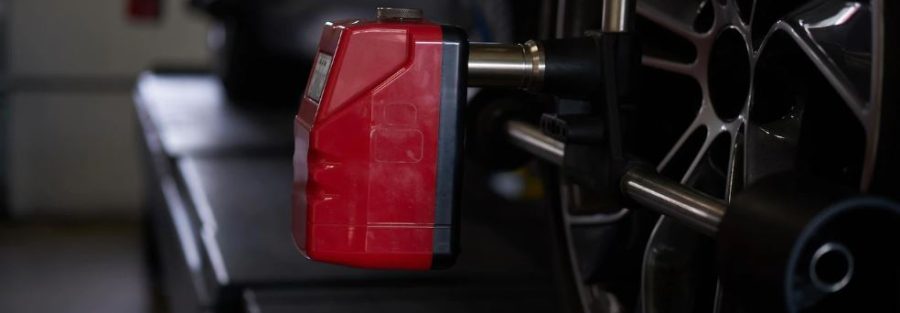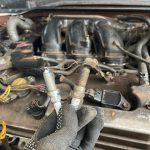In the intricate dance of your vehicle’s mechanics, one often-overlooked partner is the wheel alignment. It might not be as prominent as the engine or brakes, but it plays a pivotal role in your car’s overall performance and safety. Regular wheel alignment is not just a maintenance task; it’s a key element in ensuring your vehicle operates as intended. In this exploration, we uncover the importance and types of regular wheel alignment and why it should never be underestimated. But before we dive in, let’s learn what wheel alignment is all about.
See 3D ALIGNMENT #alignment #cars #mechanic #fastcars #abuja
Table of Contents
Wheel alignment: Importance and Types
Wheel alignment is the art of ensuring that your vehicle’s wheels are precisely positioned according to the manufacturer’s specifications. This adjustment is essential for maintaining a smooth, safe, and efficient ride.
Types of wheel alignment
There are three primary types of wheel alignment:
Camber Alignment
Camber refers to the tilt of the wheel when viewed from the front or rear of the vehicle. Proper camber alignment ensures that the tire’s contact with the road is uniform. If the camber is misaligned, it can result in uneven tire wear and handling issues. There are three types of camber alignment:
– Positive Camber: The top of the wheel tilts outward.
– Negative Camber: The top of the wheel tilts inward.
– Zero Camber: The wheel is perfectly vertical.
Toe Alignment:
Toe alignment pertains to the direction the wheels point concerning each other when viewed from above. Correct toe alignment ensures that the wheels are parallel to each other. If the toe is misaligned, it can cause tires to wear unevenly and lead to steering instability. There are two types of toe alignment:
– Toe-In: The wheels point slightly inward.
– Toe-Out: The wheels point slightly outward.
Caster Alignment
Caster alignment relates to the steering axis’s angle when viewed from the side. It affects a vehicle’s steering stability and return to center after a turn. Proper caster alignment ensures a balanced and stable ride.
Regular wheel alignment checks and adjustments, typically performed during routine maintenance or when you experience steering problems, are essential for preserving tire life, improving fuel efficiency, and ensuring safe handling. Whether it’s camber, toe, or caster alignment, each type plays a crucial role in maintaining harmony between your vehicle and the road, contributing to a comfortable and secure driving experience.
Importance of wheel alignment
1. Optimal Handling and Steering:
Proper wheel alignment ensures that your vehicle handles and steers as it should. When your wheels are correctly aligned, your car responds predictably to your steering inputs. This means you can navigate corners and curves with confidence, and your car won’t pull to one side, even on straight roads.
2. Tyre Longevity:
Imagine your tyres as the shoes of your car – they should wear evenly to provide the best performance. When your wheels are misaligned, tyres wear unevenly, leading to premature tyre replacement. Regular wheel alignment can significantly extend the life of your tyres, saving you money in the long run.
3. Fuel Efficiency:
Misaligned wheels can cause unnecessary friction and resistance on the road. This extra effort your engine has to exert to keep the car moving translates to decreased fuel efficiency. With fuel prices always a concern, maintaining proper alignment is an easy way to improve your gas mileage.
4. Safety First:
Safety should always be a top priority when driving. Misaligned wheels can lead to unpredictable handling, especially in emergency situations. Proper alignment helps your car respond predictably, reducing the risk of accidents and ensuring your safety on the road.
5. Comfortable Ride:
An aligned wheel setup contributes to a smoother, more comfortable ride. You’ll notice fewer vibrations, less steering effort, and an overall more enjoyable driving experience. Whether it’s a short daily commute or a long road trip, a comfortable ride matters.
6. Suspension Health:
Misaligned wheels can put additional stress on your vehicle’s suspension system, potentially leading to expensive repairs down the road. Regular wheel alignment can help preserve your suspension components and prevent costly breakdowns.
7. Resale Value:
If you ever plan to sell your vehicle, having a well-maintained wheel alignment can enhance its resale value. A car that handles well and has a smooth ride is more appealing to potential buyers.
8. Environmental Impact:
A well-aligned car has reduced rolling resistance, which means it consumes less energy to move. This is not only good for your wallet but also for the environment, as it reduces the carbon footprint of your vehicle.
As we emphasize the importance of regular wheel alignment for your vehicle’s optimal performance and safety, it’s worth noting that not all alignment services are created equal. When it comes to ensuring that your wheels are precisely aligned and balanced, you need a trusted partner who combines expertise with state-of-the-art facilities. This is where Vonos Autos shines.
Vonos Autos: Setting the Standard for Wheel Alignment and Balancing

At Vonos Autos, we have redefined the wheel alignment and balancing experience. Our state-of-the-art facility, equipped with cutting-edge technology, and staffed by highly skilled technicians, ensures precise adjustments for your vehicle. Our experts not only align your wheels but also assess your suspension and steering components comprehensively. We prioritize customer satisfaction, offering efficient service without compromising on quality. With Vonos Autos, you’re choosing precision and expertise that set the industry standard for wheel alignment and balancing.
So, the next time you consider the importance of wheel alignment, remember that Vonos Autos, Abuja is not just an option; it is the best in the world of automotive care, Visit us today for top notch services.





